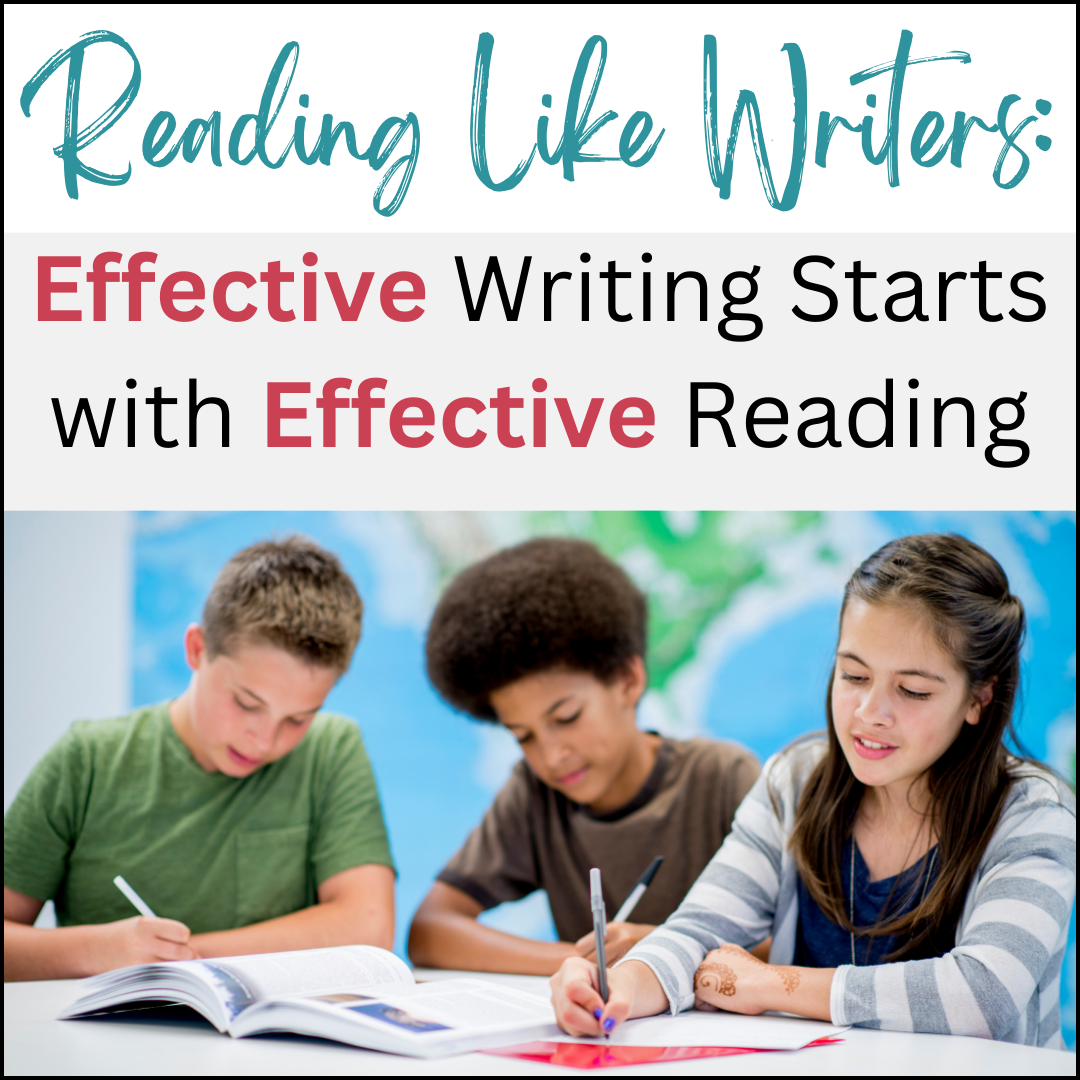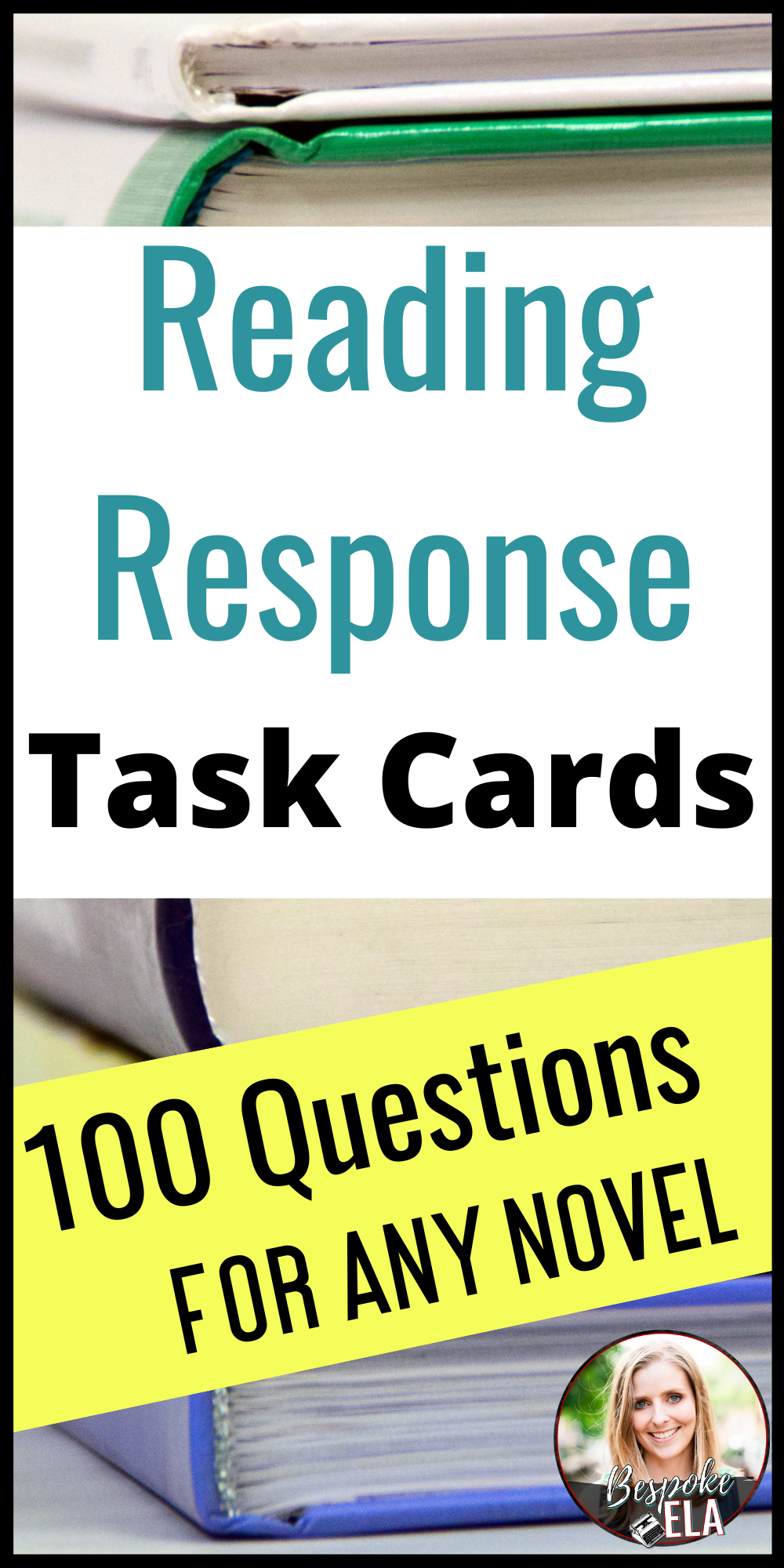As reading and writing teachers, we’ve all witnessed the seeming decline of student writing ability over the past years. We find ourselves as teachers pondering what is happening to our youth as standards drop lower and lower. We can certainly place quite a bit of blame on technology as students read less than ever, so reading in our classes is incredibly important.
The secret lies not just in writing, but in reading like a writer. This active approach goes beyond simply turning pages; it's about dissecting stories, analyzing the craft, and using those insights to fuel a reader’s writing toolbox.
But how can we as teachers give our students the tools they need to read like writers?
Here are five essential supports to guide your journey:
1. Ask Provocative Questions:
Instead of passively absorbing the plot, become a literary detective. Question everything!
Why did the author choose this setting?
How does this sentence reveal the character's inner turmoil?
What literary devices are at play?
These questions spark critical thinking and reveal the author’s deliberate choices, giving readers a deeper understanding of the text.
Research: Stanford University's Carl Bereiter and Marlene Scardamalia famously identified "dialogic inquiry" as crucial for learning. Their work suggests that asking provocative questions fosters deeper engagement and encourages learners to construct their own meaning from the text.
But, this isn’t brand new information for us as English teachers. The question is the how. How can we teach students to have a dialogue with the text?
Here are a three essential questions to practice using with your students:
What’s happening? (the literal level)
Why is this happening? (starting analysis— cause and effect)
What does this show about the character(s)?
These three questions will get your students reading more closely and analytically.
2. Slow Down and Dig Deeper:
Resist the urge to speed through pages. Savor the sentences, appreciate the wordplay, and analyze the author's style. Pay attention to recurring motifs, subtle foreshadowing, and the rhythm of the narrative. This close reading, as described by Francine Prose in her book Reading Like a Writer, allows readers to appreciate the craft behind the story and glean valuable techniques for their own writing.
A few strategies that we can use to accomplish this include:
Style stalking or sentence stalking where students find a sentence they like, identify its structure, and then write their own sentence modeled after the one from the text.
Dissecting the style of an important passage by ratiocinating it and highlighting different types of sentences in different colors (i.e. simple sentences in yellow, complex sentences in blue, compound sentences in green, etc.). Color helps student visually see the patterns.
Using mentor sentences from a text to practice skills ranging from literary devices to grammar patterns.
3. Annotate Like a Champion:
Students should transform their margins into a writer's workshop. They should be encouraged to underline striking sentences, jot down observations, and sketch out connections between characters and plot points. These annotations become a personal roadmap, helping readers recall key details and revisit crucial passages later. In a study published in the Journal of Educational Psychology, researchers found that annotation significantly improved students' comprehension and critical thinking skills… which drives me MAD when I see so many texts becoming accessible via electronic means only OR standardized tests moving to online formats where students can’t annotate. This goes against the research!
Now, as teachers we know that we tend to provide our students with copies of books, which means they cannot write in them, but here are some workarounds for that problem:
Margin guides: Provide students with pre-printed margin guides with prompts or questions to answer, encouraging focused annotation within the margins.
Post-it notes: Encourage students to use colored Post-it notes for different types of annotations like summarizing, analysis, or vocabulary.
Separate notebook: Have students keep a dedicated notebook for their annotations, allowing them to explore different formats like mind maps, drawings, or dialogues with the text.
Foldable graphic organizers: Design or use pre-made graphic organizers that students can fold into the book, promoting specific analysis of character development, plot, or themes.
And dare I add… grade their annotations! I’ve had students turn in their books to check their annotations (via the sticky note method) and have made it a cornerstone skill in my classroom. This is part of the process of having dialogue with a text to decipher its message.
4. Embrace the Dialogue:
Imagine yourself sitting across from the author, discussing their craft. Engage in a mental conversation, questioning their choices, debating character motivations, and proposing alternative scenarios. This interactive approach, championed by Louise Rosenblatt in her Literature as Transaction, keeps readers actively involved in the story and allows readers to see it from various perspectives.
Questions to ask the writer:
Why did you use this setting?
Why is the protagonist this age, gender, race, ethnicity, etc.?
Why did you end the story where you did?
5. Steal Like an Artist (But Better):
Don't be afraid to borrow. Readers should identify the techniques they admire, the sentence structures they find captivating, and the character development strategies that resonate with them. Students can then adapt these elements, not copy them outright, to enrich their own writing. As Austin Kleon emphasizes in his book Steal Like an Artist, inspiration often comes from remixing and reinterpreting the work of others, adding your own unique spin to established techniques.
Practically speaking, this means for us as English teachers, we need to have an established routine of using mentor texts. If we expect students to utilize a strong attention-grabber at the beginning of an essay, we need to show them several examples of different ways to start. We need to treat it like sampling a buffet, trying out different strategies until you find the “right” one for your essay. The more options students are exposed to, the more options they can put into their writer’s toolboxes.
Remember, reading like a writer is a journey, not a destination. By actively engaging with text, asking questions, and learning from the masters, our student writers can unlock a deeper understanding of story and craft. The key to developing better writers starts with developing better readers.
Related Resource
About the Author
Meredith is the founder and creator of Bespoke ELA and TeachWriting.org. She has taught high school English for 15+ years in Dallas, Chicago, and New York City and holds a M.A. in Literature from Northwestern University. She has always had a connection to the written word-- through songwriting, screenplay writing, and essay writing-- and she enjoys the process of teaching students how to express their ideas. Meredith enjoys life with her sweet daughter and Yorkie.




